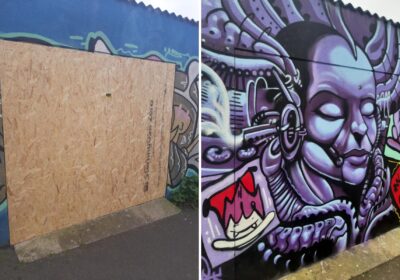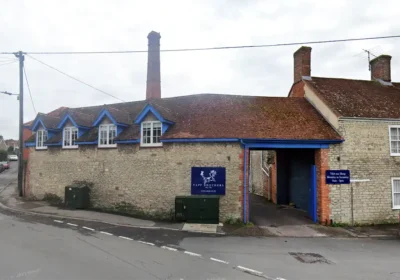Two plaques have been unveiled to commemorate the bravery of a Fontmell Magna man awarded the Victoria Cross. Lieutenant Philip Salkeld died in 1857 of wounds received during the Indian Mutiny.
His remarkable bravery has long been commemorated at Salkeld Bridge, next to Plumber Manor – however the stone inscription had very little detail, merely reading: ‘Salkeld 1857 Delihi’.
The stone has been cleaned up and two new plaques installed, which were unveiled by the chairman of Dorset Council Cllr Val Pothecary and Philip Salkeld’s great-great nephew Robert Salkeld and by Mrs Sara Jones CBE, widow of Lt. Col “H” Jones VC of the Dorsetshire regiment who died in the Falklands.
Cllr Pothecary cut a cake in the form of the bridge at a reception afterwards. Philip Salkeld VC was the son of vicar Robert Salkeld of Fontmell Magna, where there is a large cross in his memory in the churchyard. He died on October 10, 1857 in Delhi, nearly a month after being mortally wounded.
The family originally owned land in Fifehead Neville, and this bridge was built by public subscription as a memorial for someone who served in the Bengal Engineers. Before the bridge was built, this would have been a ford, and often impassable. Philip Salkeld’s military career started when he entered Addiscombe College in 1846. While he was there he won a competition for an engineer appointment, after attaining the top position in mathematics and modern languages.
He achieved the rank of 2nd Lieutenant in 1848 and then spent the next two years studying the theoretical and practical side of fortification and engineering at the Royal Engineer establishment at Chatham.
He joined the Corps of Sappers and Miners, Bengal Establishment in Calcutta in June of 1850, and quickly learned Hindustani. Then in June 1853 he was sent to Meerut as the extra engineer, becoming officer in charge of the Grand Truck Road until December 1856.
During this time, he sent £100 a year home for his younger brother Charles’ education – he hoped to follow Philip to Addiscombe College. On May 10, 1857 at the outbreak of the Meerut mutiny Philip Salkeld – by this time a lieutenant – escaped from Delhi and the massacre but lost everything.
He joined Major General Sir Harry Barnard’s column and on the night of September 13, 1857 it was decided to launch an assault on the Cashmere and Water Bastions at dawn the following day. They were to attack the Kashmir Gate after it had been blown open. Salkeld led his column to the gateway where they came under musket fire as they laid powder bags. Several officers were shot dead as they tried to light the charge, and Salkeld was shot through the thigh while the powder went off. Minutes later he was discovered lying in a ditch, his arms broken. He was loaded onto a stretcher and taken to hospital.
Lieutenant Salkeld survived until October 10, but he died of his injuries, despite having had an arm amputated. He had been awarded the VC just before he died, and was buried in the cemetery at Delhi.
Support Us
Thank you all so, so much for the love and appreciation you’ve shown us since we launched the New Blackmore Vale.
Please show your support and add a review on our Facebook page or on Google.










Leave a Reply